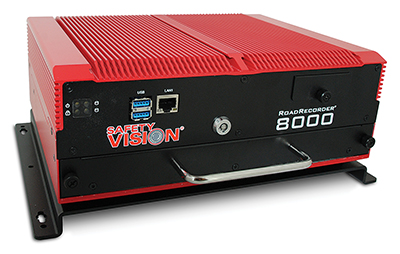
By Steven Winnefeld
Several new options for mobile video security and surveillance have emerged in the technology marketplace. Small, compact, event-based recorders offer video review services and driver behavior modification (DBM) reports. Their employees look over any generated events that create a number of reports and analytics that can be displayed on a dashboard for your convenience. The makers of event-based/DBM recorders enjoy touting the advantages of these kinds of systems, but they come with significant drawbacks that reduce the benefits and value that should be considered.
Event-based recorders only activate under certain circumstances – and then just for a few seconds. Without the continuous recording that full-featured recorders can provide, you simply won’t get the full story. For example, let’s say a vehicle in your fleet is involved in a serious collision. An event-based recorder is only going to capture approximately 20 to 30 seconds of video which may not provide key details, such as passenger activity, driver distractions, swerving to avoid traffic, or dozens of other critical details that constitute the complicated nature of a vehicle collision. A continuous recording system captures all of this, from many more camera angles, complete with meta-data that can show which vehicle lights were operational, if brakes were applied, and more. With this information you can see how the driver reacted, confirm he followed the correct procedures, and have a record that could possibly exonerate him from any wrong-doing.
Second, event-based recorders typically record events at a very low resolution quality and frame rate from only a few cameras. In demanding situations, the detail of the recorded video is absolutely vital. In another example, imagine a physical altercation occurs on one of your buses. When police and other authorities are called and the video is reviewed to understand the circumstances that led to the event, it is obviously important to understand who or what the aggression was directed towards. Only a serious continuous recording system, with the capacity to record many views from a multitude of quality, high definition cameras, is going to capture all of the elements that could possibly lead to apprehension or conviction.
 The reason for these short event recording times is this video is transmitted automatically to the manufacturer for review. In order to keep monthly customer fees remotely competitive, cellular network and labor costs must be minimized. This also involves unnecessarily high shock thresholds that reduce the amount of generated events. These compromises directly increase your risks and costs when they fail to capture critical events or evidence, are of too poor quality to be useful, or even just completely overlooked because a reviewer wasn’t familiar with your fleet operations. Continuous recording systems typically work in tandem with exceptionally powerful back-end video management systems (VMS). You are in control of the quality and length of the video that is recorded, where it is stored, how long it is stored, who is in charge of reviewing it, and who has access to it. Extensive analytical reports can be customized to the exact requirements of the agency and the preferences of the personnel reviewing them. You can be content all of these features are open and available to you with continuous recording.
The reason for these short event recording times is this video is transmitted automatically to the manufacturer for review. In order to keep monthly customer fees remotely competitive, cellular network and labor costs must be minimized. This also involves unnecessarily high shock thresholds that reduce the amount of generated events. These compromises directly increase your risks and costs when they fail to capture critical events or evidence, are of too poor quality to be useful, or even just completely overlooked because a reviewer wasn’t familiar with your fleet operations. Continuous recording systems typically work in tandem with exceptionally powerful back-end video management systems (VMS). You are in control of the quality and length of the video that is recorded, where it is stored, how long it is stored, who is in charge of reviewing it, and who has access to it. Extensive analytical reports can be customized to the exact requirements of the agency and the preferences of the personnel reviewing them. You can be content all of these features are open and available to you with continuous recording.
More things to consider: are event-based/DBM recorders physically up to demanding mobile environments? These recorders are usually mounted to the windshield to capture inside the cabin and the road ahead. What’s to stop a poorly behaving, angry driver from simply reaching up and ripping the entire device off? And are these cameras the correct cameras for the location they’re installed in and for the angle they are attempting to catch? Often you have a really tight, but critical space in the cabin that requires a specific field of view and image quality, such as a fare box. A flexible system with multiple camera options to get the perfect view is essential.
With these critical security compromises, it is evident full-featured network video recording systems offer superior value in the long run, and are the best way to ensure security and safety on any large professional vehicle fleet.
Steven Winnefeld is the documentation specialist for Safety Vision, LLC, a pioneer in mobile video surveillance systems. Safety Vision prides itself on its institutional knowledge. Visit Safety Vision at www.safetyvision.com.
